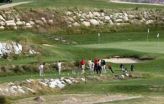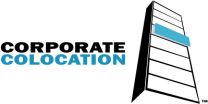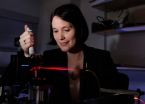(Press-News.org) Irrigation is one of the most controversial aspects in the sustainable management of golf courses. Researchers from the Canary Islands have spent 25 years analysing the practices relating to reclaimed water at one of the oldest golf courses in Spain. The results show that plants on the course receive 83% more water than they need.
"Excessive amounts of water are used, and this cannot be justified from any perspective", María del Pino Palacios Díaz, lead author of the study and a researcher at the Department of Animal Pathology, Animal Production and Food Science and Technology at the University of Las Palmas de Gran Canaria, tells SINC.
Despite the high cost of water (around €0.4 per cubic meter), the amount of water used on golf courses in the Canary Islands continues to be "excessive". On the golf course studied, plants receive more than 83% more water than they need, which reduces the risk of substances accumulating in the soil, but increases the risk of contaminating the aquifer.
The researchers have confirmed this on the basis of a "detailed" analysis of the nutrients and other substances contained in the reclaimed water, and by studying how this is absorbed by the soil and plants, how it travels through the unsaturated area, and the likelihood of it reaching the aquifer.
The research, which has been published in the Spanish Journal of Agricultural Research, also looked at the effect of re-using water reclaimed from desalinated urban water on soil fertility and the health of the greens between 1982 and 2007 at the Royal Golf Club of Las Palmas, one of the oldest courses in Spain and a "model" club in terms of how it is managed.
According to Palacios Díaz, although the study focused on a single golf course, the results could be extrapolated "to others in semi-arid or arid areas that are irrigated using water from urban or marine sources, and with similar soil characteristics".
Effects of using treated water
The quality of the water used to irrigate golf courses has improved a great deal since the 1970s. It is also "recommendable" that those that are able and that suffer from salinity problems reuse desalinated water for maintenance purposes. In fact, "permission is not given for new courses if they cannot show that the water used to irrigate them will be reclaimed", the expert explains.
The Royal Golf Club of Las Palmas is irrigated with water that has been desalinated, consumed by the public, treated and once again desalinated before being recycled for reuse. However, "the combination of water with low salinity and a high proportion of exchangeable sodium (which is common in desalinated regenerated water) can have a negative impact on the structural stability of soil, which loses fertility over the medium term because of losing its capacity to drain away water", the researcher says.
To this must be added the possible long-term effects of using it for cultivated plants, the irrigation system and the water of the aquifer. The scientists say it is not only the quality of the water used that could harm the condition of the soil and the aquifer, but "the frequency and amount of the recycled water used in irrigation".
"It is assumed that the consequences only depend on the quality of the water, when in fact the other factors normally have a greater influence", says Palacios Díaz in this study, which is part of the TRAGUA project on Water Treatment and Recycling for sustainable management.
In relation to the negative long-term impacts of the excessive use of desalinated reclaimed water, the researchers propose "adapting the species and varieties watered, instead choosing types that are more tolerant of salinity and thereby reducing the cleaning requirements. Paradoxically, this adaptation has been implemented at the golf course studied, but the amount of water used has not been reduced", explains the scientist.
The study also calls for the amount and frequency of watering to be adjusted to the needs of the plants irrigated in the area in question, and for consumption amounts to be calculated using internationally-accepted experimental equations (evapotranspiration equations). "This is the only way of ensuring sustainable use of reclaimed water", concludes Palacios Díaz.
However, Spanish legislation does not address the sustainability criteria for reusing water. "Such criteria are poorly understood and, as a result, are generally not fulfilled", warns the researcher.
INFORMATION:
References:
Estévez, E.; Cabrera, M.C.; Fernández-Vera, J.R.; Hernández-Moreno, J.M.; Mendoza-Grimón, V.; Palacios-Díaz, M.P. "Twenty-five years using reclaimed water to irrigate a golf course in Gran Canaria" Spanish Journal of Agricultural Research 8, edición especial 2(95-101), 2010.
Golf courses that reuse water irrigate too much
2011-03-16
ELSE PRESS RELEASES FROM THIS DATE:
What If I Had An Accident But The Other Driver Had No Insurance?
2011-03-16
In most states, New Jersey included, all insurance policies have "uninsured motorist protection", and most have "underinsured motorist protection". What does this mean?
Uninsured motorist protection is mandatory in the State. That is, your insurance carrier/agent must include it in your coverage. You can (and should) have coverage limits which match your own liability insurance coverage limits. This coverage protects you in the event that you are involved in an accident which is caused by a driver who has no liability insurance on his car. By some estimates, nearly 2 ...
20th anniversary of first laparoscopic nephrectomy
2011-03-16
New Rochelle, NY, March 15, 2011—Since the first laparoscopic procedure was performed to remove a diseased kidney 20 years ago at Washington University in St. Louis, this breakthrough minimally invasive technique has become the standard of care for surgical nephrectomy. This remarkable achievement is celebrated with a series of cutting-edge articles in Journal of Endourology, a peer-reviewed journal published by Mary Ann Liebert, Inc. (www.liebertpub.com). The issue is available free online at www.liebertpub.com/end
In 1990, all of the technical challenges associated ...
Medical Malpractice... Is Anesthesia Your Most Dangerous Enemy?
2011-03-16
When most of us think of the perils that present themselves during surgery or hospitalization, we think of surgeons who may make cutting mistakes, or leave objects inside of us. We think of nurses who may give us the wrong medications, or unsanitary conditions that may cause severe infections. But it is entirely possible that the greatest danger lurking within the walls of the hospital is anesthesia.
It is an oversimplification to think that anesthesiologists simply render a patient unconscious at the beginning of the surgery, and then wake him up at the end of the surgery. ...
Northern peatlands a misunderstood player in climate change
2011-03-16
(Edmonton) University of Alberta researchers have determined that the influence of northern peatlands on the prehistorical record of climate change has been over estimated, but the vast northern wetlands must still be watched closely as the planet grapples with its current global warming trend.
Northern peatlands, which are a boggy mixture of dead organic material and water, cover more than four million square kilometers. The largest northern peatlands occur in the subarctic regions of Canada and Russia. As peatlands grow they sequester carbon (in the form of carbon dioxide ...
Dairy farmer finds unusual forage grass
2011-03-16
A U.S. Department of Agriculture (USDA) grass breeder has rediscovered a forage grass that seems just right for today's intensive rotational grazing.
A farmer's report of an unusual forage grass led Michael Casler, an Agricultural Research Service (ARS) geneticist at the agency's U.S. Dairy Forage Research Center in Madison, Wis., to identify the grass as meadow fescue. Meadow fescue has been long forgotten, although it was popular after being introduced about 50 to 60 years before tall fescue.
ARS is USDA's principal intramural scientific research agency.
Casler ...
Tying the knot with computer-generated holograms: Winding optical path moves matter
2011-03-16
WASHINGTON, March 15—In the latest twist on optical knots, New York University (NYU) physicists have discovered a new method to create extended and knotted optical traps in three dimensions. This method, which the NYU scientists describe in the Optical Society's (OSA) open-access journal Optics Express, produces "bright" knots, where the maximum of the light intensity traces out a knotted trajectory in space, for the first time allowing microscopic objects to be trapped along the path of the knot. The method may even, one day, help enable fusion energy as a practical power ...
Reliant Technology Offers IBM EXP810 Upgrade for Select IBM Storage Systems
2011-03-16
Reliant Technology, an EMC and IBM storage supplier, is proud to offer the IBM EXP810 storage upgrades for the IBM DS4000 series, including the IBM DS4800, the IBM DS4700, IBM FastT storage, the IBM DS4500, the IBM DS4300 and DS5020 storage systems, giving customers an affordable option for growth. Reliant Technology offers quality refurbished storage and SAN Hardware from IBM, EMC, NetApp Brocade, Data Domain, and HDS.
The IBM EXP810, otherwise known as an IBM expansion shelf or disk tray, is a 16 slot disk enclosure that allows IBM storage controllers to be upgraded ...
Finding of long-sought drug target structure may expedite drug discovery
2011-03-16
The researchers are from the National Institutes of Health, collaborating with labs at The Scripps Research Institute and the University of California, San Diego. The finding is published in the March 10 edition of Science Express.
"This is an important step forward — it was impossible until recently to know how this type of receptor is switched on by chemical signals like a tiny machine," said Dr. Kenneth A. Jacobson, chief of the Laboratory of Bioorganic Chemistry in NIH's National Institute of Diabetes and Digestive and Kidney Diseases (NIDDK) and an author on the ...
Corporate Colocation Inc. Completes Examination in Conformity with Statement on Auditing Standards No. 70 (SAS 70), Service Organizations
2011-03-16
The exhaustive audit covered the period September 1, 2010 through February 28, 2011 and was performed by an independent accounting and auditing firm.
Completion of the SAS 70 Type II examination indicates that Corporate Colocation Inc. processes, procedures and controls have been formally evaluated and tested by an independent accounting and auditing firm. The examination included the company's controls related to: Physical Security, Environmental Security and Network Monitoring.
SAS 70 is designated by the U.S. Securities and Exchange Commission (SEC) as an acceptable ...
New laser technique opens doors for drug discovery
2011-03-16
A new laser technique has demonstrated that it can measure the interactions between proteins tangled in a cell's membrane and a variety of other biological molecules. These extremely difficult measurements can aid the process of drug discovery.
Scientists estimate that about 30 percent of the 7,000 proteins in a human cell reside in the cell's membrane and that these membrane proteins initiate 60 to 70 percent of the signals that control the operation of the cell's molecular machinery. As a result, about half of the drugs currently on the market target membrane proteins.
Despite ...





